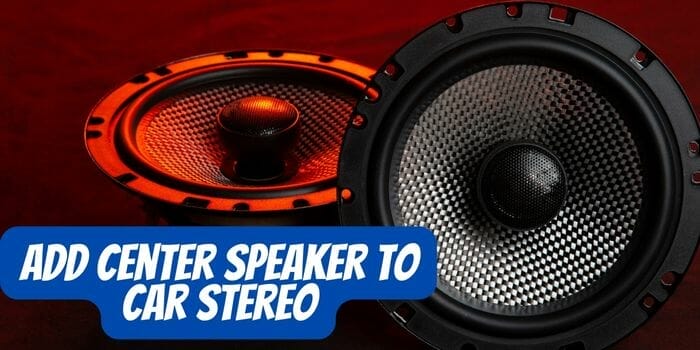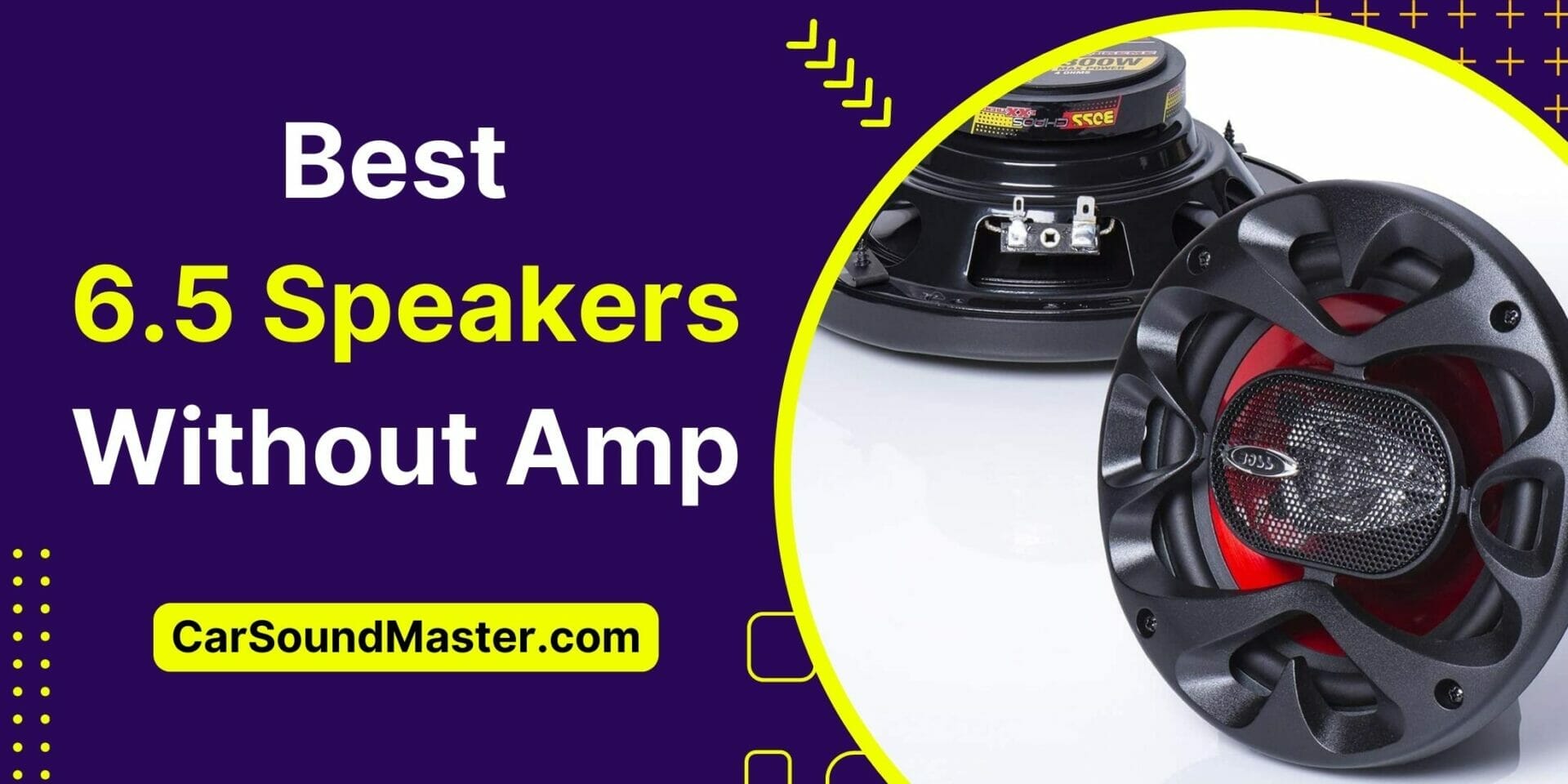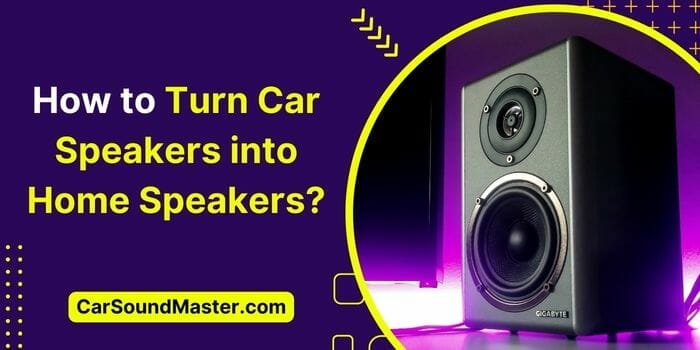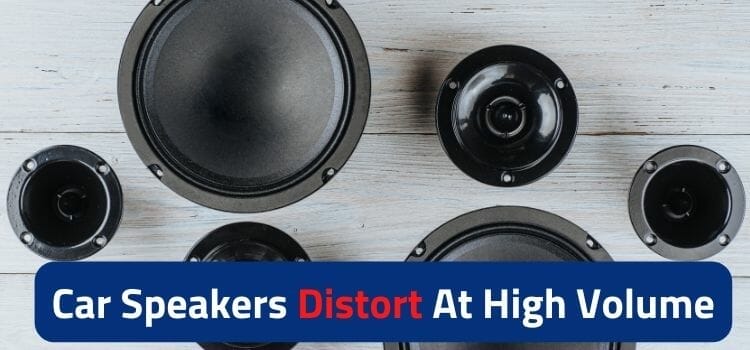How to Match Woofer and Tweeter? 7 Straight Steps
Components have so many edges over full-range speakers, but playing on their multifarious benefits may sometimes become a real struggle.
This usually happens when you prefer DIY selecting and matching woofer and tweeters instead of purchasing a good aftermarket 2-way components set.
After all, matching woofer and tweeter yourself means bypassing the expertise of speaker manufacturers/brands to somehow find and hit that sweet spot between the bass and treble on your own.
Well, no need to hurry or worry as it’s not that much rocket science either. If you have time, resources, and a basic understanding of some technical terms, all you need to build a DIY 2-way speaker includes – well, stay put with patience and keep scrolling down.
How to Match Woofer and Tweeter?
Matching a woofer and tweeter simply involves finding the right balance between the frequency overlap, impedance, sensitivity, and the cone material of both drivers.
In addition, it also means getting a proper crossover as that’s ideally the component that should make for the perfect coordination between the woofer and tweeter.
The best practice while doing up a DIY speaker is to get the woofer first and then the tweeter(s). That’s because, ideally, it’s always about matching the tweeting trebles to the oomphy bass and not the other way around.
Anyway, here’s to a detailed breakdown of what are some key factors you need to square off while trying for a perfect woofer-tweeter twinning.
#1. Understanding the Frequency Range Response
First thing first, taking your time to learn about different terms and technologies of speakers is a must. You need to know that a woofer comes second-last when it’s about handling the lowest range of audible spectrum; tweeters cope with the spectrum’s highest region.
Woofers are the drivers designed to throw more bass-tend woofs with a frequency range response of around 40Hz to 2KHz.
Whereas, tweeters typically handle the notes within 2KHz to 20KHz, and sometimes even beyond human audibility where you don’t hear but just feel the frequencies.
Knowing all this, you’ll find it easy to pick the appropriate components esp. the crossover from the market.
#2. Does the Size of the Speakers Matter?
The size of your woofer and tweeter does matter big time in their handling of the designated sound ranges.
A large woofer essentially means more depth and impact in bass notes (i.e. frequencies produced at as low as not 40 but, maybe, 20Hz even). However, the bigger the size, the least will the woofer tend to touch the high end of its supposed tolerance range i.e. 2KHz.
On the contrary, a smaller woofer (say something around 5”) would easily touch the 2KHz region and even go beyond. But it will eventually find it difficult to dip down to its low-end of the tolerance range (i.e. 40Hz), and may only limit at 80 or 90Hz at the lowest.
That said, a small-sized woofer won’t give you that heavy punch, whereas a large woofer will leave gaps and make for a hard and spooky crossover. For that reason, you’d need to get a slightly large tweeter to dip down its low-end range and cover for the gaps.
What About Acoustic Waveguides Then?
And that’s where the waveguide comes in handy. A big tweeter with preferably lower lows than higher highs might be expensive and a rarity too.
Therefore, go with any standard tweeter (covering 2KHz to 20KHz) but also spend a bit more bucks on an appropriate waveguide. Set the tweeter with the waveguide in a way that best matches the dispersion angle of the woofer, dip a bit more on its lower end, and make for a lucid crossover region.
#3. Impedance and Power Ratings
When matching woofer and tweeter, impedance may not matter much except that there should be no mismatch. A difference in the resistance ratings can result in an uneven frequency response and may lead to a failure of both, either your speakers or the amplifier.
Given that, an 8-Ohm woofer and 8-Ohm tweeter will make the best match; 4 with 4, 16 with 16, and 40 Ohm with 40 Ohm – just like that.
Though there are more issues associated with getting low-resistance speakers as you can see here (2 Ohm vs 4 Ohm Car speakers), I’d suggest you put twice the effort while dealing with this thing.
Regarding how to match the woofer and tweeter in watts, it’s an absolutely senseless thing. Rather, it’s all about figuring out the ratio of the tweeter’s watts to the woofer’s watts which is approximately around 20:80 or 10:90, respectively.
So because woofers are the most power-hungry of the lot, all you need to do is just ensure that you have an amplifier powerful enough to easily feed your woofer; the tweeter(s) can easily cover up.
#4. Sensitivity
Tweeters are usually much more sensitive compared to miss-bass or woofers, respectively, courtesy of their small sizes and that the high-frequency notes are much easier to handle.
Meanwhile, for a perfect baffle setup, you need the woofer to be more sensitive (i.e. around +3 or 4 dB) than the tweeter(s).
For that reason, you should either stroll around the market to find one least-efficient tweeter to be matched with a highly sensitive woofer or just pad the tweeter using a crossover to reduce its efficiency when DIY building the speaker.
#5. Build Material of Drivers (Cones)
Speaker cones are made up of different materials ranging from paper to plastic and even metal. While each one has its own merits and demerits, plastic diaphragms (also called propylene/polypropylene cones) are usually the most popular of all.
Nevertheless, metal seems to be the ideal material to go into speaker cones. Metal cones are quite more accurate and resolving compared to the others except that their paper counterparts may have slightly extra smooth sounds.
However, that makes them more lisp and reeling too.
All in all, speaker/driver selection based on their build material is a mix of both art and science. A paper or plastic-cone woofer may, most of the time, sound excellent in tandem with a metal-dome tweeter. Or a setup that’s altogether opposite might sometimes yield even better results.
So, unless you’ve tried and tested a few different matchups yourself, I’d only say “It depends”!
#6. Advanced Understanding of Crossover Installation
Most important of all, having a full-fledged knowledge of crossover technology and how these components work in speaker setups is one seriously good thing.
After all, the coordination (between woofs and tweets) part of your entire DIY build is gonna done by only this solo component.
Properly setting up the crossover means all the high frequencies, say cymbal crashes, would be dictated toward the tweeter, while all the low notes, like bass guitars, etc., would reach the woofer.
The thing, though, while setting up a crossover point is that there should be a slight yet enough frequency overlap between both drivers. A crossover point of around 15Hz higher than the low end of your speaker’s tolerance range is almost always the best bet.
That’s why, when matching the woofer and tweeter for a DIY 2-way speaker, a crossover point at around 2KHz will do the best job.
Anything below 2KHz will be sent to the woofer (we know that’s the range they handle well), while anything above will be smoothly dictated to the tweeter.
While setting the crossover point, a lot of people usually try to push the tweeters to as low as possible. And there are two good reasons for that.
Firstly, the woofer starts beaming at high beats, so it’s preferred to keep the woofer’s higher tolerance a tad bit lower than the supposed range. Secondly, it also helps you with going for a bigger woofer and easily attain more bass (as described in Point#2 above).
#7. Placement
Careful placement, positioning, and alignment of your drivers are also critical in achieving a well-balanced and cohesive sound experience.
Whether it’s the room acoustics in home theaters or a car’s cabin gain, these things do play quite a decisive role in an effective woofer-tweeter twinning.
The placing arrangement of the woofer and tweeter influences the sound imaging and how the different frequencies interact.
There is no hard and fast rule, and you should keep tweaking the drivers’ positions until you find a place where they are least influenced by free-air resonance, reflections, and all that.
Additionally, tweeters are usually mounted somewhere high up pointed straight to your head position both in cars and HTs, and not at your knees or so like woofers.
Closing
To sum it up, this is the flowchart of steps and practices you need to follow to hit and widen that sweet spot of perfect soundscape through your DIY 2-way speaker:
- Get a woofer and tweeter with the same impedance. Try matching up a metal-dome tweeter with a plastic/paper woofer (or refer to Point#5 above to learn more).
- Make sure you have a powerful amplifier if you’re going for a large woofer with higher wattage requirements.
- Get a suitable crossover and set the transition point at around 2KHz.
- Attenuate the tweeter’s sensitivity via the crossover (perhaps by putting a resistor in series).
- Take your time in positioning the drivers.
And that’s all about how to match the woofer and tweeter. I hope it helps.







